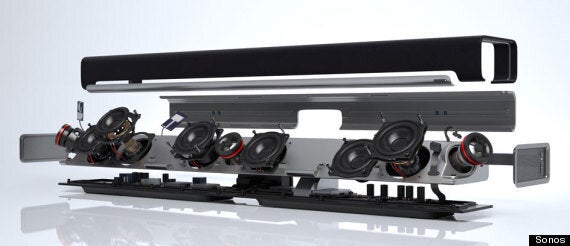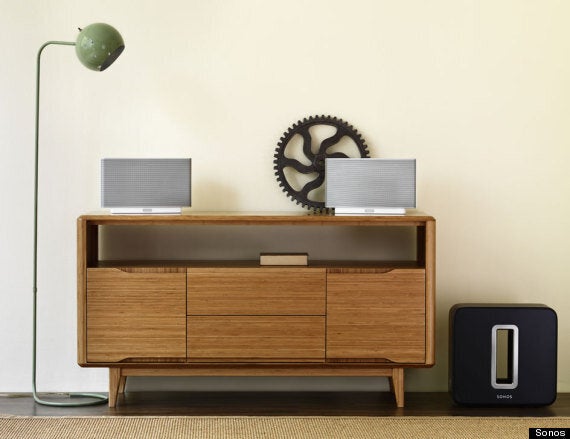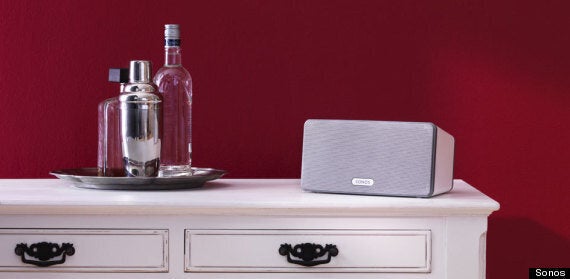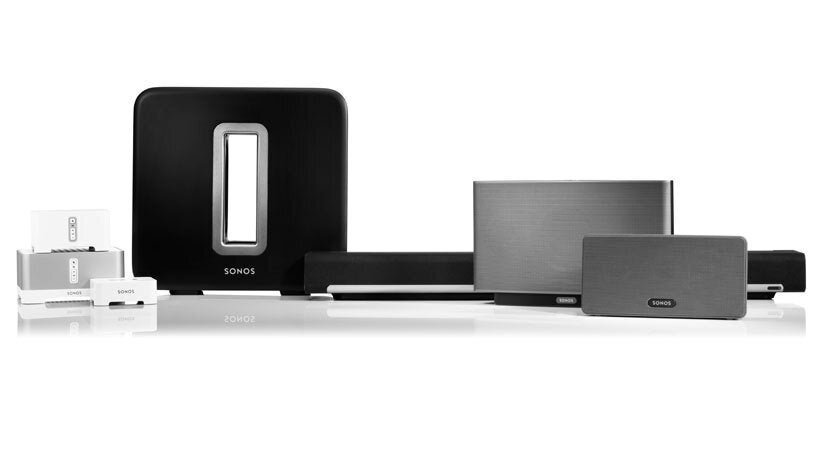For a product with such universally great reviews, I should have been excited after installing a trial Sonos wireless audio system in my home.
Far from it. I was afraid.
On some level, I now realise, my fear was simply of assimilation. The Sonos system really has picked up such consistently stunning praise of late, from T3 awards nominations to industry ratings, that falling into line and learning to love its charms seemed intensely worrying, in just the same way as it would if you woke up to find you now supported Man U, the Coalition and Mumford & Sons. My only move after that would be to trudge off to The Chestnut Tree for a shot of engine oil gin.
I was also worried about Sonos on a technical level. Everything I knew about the System seemed to suggest that I would have to abandon my own hodge-podge, AirPlay-and-dodgy-wires speaker shanty town, and accept Sonos fully and purely into my heart, worshipping no other idols. Could I face the bother?
Finally, I was afraid that Sonos would turn out to be just too good. I have never counted myself an audiophile, and even being made aware of the alternative to muddy, shoddy PC speakers seemed dangerous. What if - like some kind of hyper-addictive, powerful narcotic - Sonos wasn't bad, but was just too amazing? The system is not cheap, and with a maximum of 32 wireless audio pieces to connect would this be a habit I could sustain?
Clearly, I was over-thinking it.
But as it turns out, all three concerns were true, in a way. Sonos is the Man U of speakers. It will replace your existing setup. And it will take your money. Because it's brilliant.

First, the set-up. Sonos has done a lot of work in simplifying its messaging and mechanics about how this works - and the good news is that as long as you have all the rights bits and pieces, it really doesn't take any time at all.
Put simply, you either have to connect you first Sonos speaker to your home router, or plug in a £39 Bridge to the router and connect your speakers to that using the well-designed Sonos app for an iOS or Android tablet or phone. With this app as a controller, you can proceed to add together the bits and pieces that make up the whole system.
Plug the Playbar into your TV's digital out port, turn off your TV's own speakers and press a single button on the Playbar to add it to the network through the app. Immediately your Playbar is working, and as long as you're set to a decent enough audio source you'll notice the difference. It's worth experimenting with the different modes too - including 'Night Mode' which aims to quiet aspects of the sound so as not to disturb neighbours, and a mode that boosts speech.
Adding additional speakers is also as simple as it could possibly be - though given the cost (a Playbar alone is £599) this might realistically take place over years, rather than weeks or months. Two Play:3 units (£249 each) can be added to the Playbar as surround TV speakers. Play:5 speakers are best for music and other audio, since they don't work as surround speakers oddly, and the Sonos Sub (£499) adds emphatic depth, weight - and, again, cost - to the Playbar, though we didn't get to try that particular gizmo.
The Playbar on its own sounds wonderful. But put all of these units together in a circular set-up, turn on one of the massive variety of audio sounds available through the Sonos app (from Spotify, Rdio, TuneIn Radio and many, many more including, most recently, Hype Machine) and you'll be simply blown to pieces by the awesomeness of what comes out.
Perfectly synchronised, tuned, rich, surround sound which sings across the air and directly into the dark, secret corners of your brain.
It's remarkable. And it's also addictive. For as soon as you've reached this plateau of sound excellence, you want to go further, do more, and reach beyond what the Sonos system is already adding to your life.
Take Airplay. Apple's wireless audio system is perhaps the most underrated feature of its mobile OS ecosystem, allowing you to pump music and video directly from your computer, iPhone and iPad to your TV and Airport Express speakers. And while at first the fear is that these two systems won't play nicely together, if you just follow the instructions, and have a Play:5, they do exactly that. And what about audio stored on an Android device? Yep, as of July it can do that too.

In every respect the Sonos system is a premium product. Yes, it will cost you. But it will also look the part. Their speakers are universally clean, crisp, stark and unobtrusive. They fit into any home with ease, looking more like refined pieces of furniture than techy speakers. And of course the lack of wires helps.
The Playbar in particular is a lovely looking piece of kit. It's visibly well made without being flashy, like a classic guitar or, oh well, an Apple product, and when affixed to the wall with a £35 adapter, having automatically adjusted its sound for the new alignment, it looks genuinely futuristic.
There are a few issues, however - and like any system, this one isn't perfect. The Playbar only has one input - Digital In - and that means that you need a TV tuned to cope with passing audio from your connected boxes through the digital connection. Not every TV does this - and it's obviously worth checking yours does. There's also no dedicated remote - the Playbar learns to use your TV remote instead - and that can get tricky too depending on the niggles of your setup.
Plus we did encounter intermittent issues with grouping and ungrouping our speakers when switching from TV to music - since the Play:5 doesn't work with the surround sound, we had to manage when and how it was used more than was ideal.
The other big pill to swallow has already been mentioned - the price. The kit we tried out totalled about £1,400, and for that you can get an awful lot of speakers and soundbars if you shop around.

The best thing you can say about the Sonos system, however, is that the more you live with it, the less of an issue that initial investment seems. It's clear Sonos is making a growing effort to extend and improve the Sonos app, adding new music and content sources and refining its mechanics, and that overall the company is in it for the long haul. And your system is just going to get better over time.
Look at it like this: buying a Sonos system is like buying a high-end car. Except unlike a high-end Audi, you don't have to drop all your money at once. Instead you can start with the engine (Playbar), add the wheels at Christmas (Play:3s) and maybe in a year or two start to think about a sunroof with a Sub or Play:5. It's a dangerous habit - but at least it's a manageable one.
Maybe the Sonos is just the kind of product that you have to own (or trust) before you can come to terms with spending the money for it. Maybe you can take our word for it - or that of virtually everyone else that's tried it.
But the reality is this: once there's a Sonos safely under your TV, in your bookcase, on your bedside table -- once you've made your peace with joining the collective - you'll never want to let it go.

